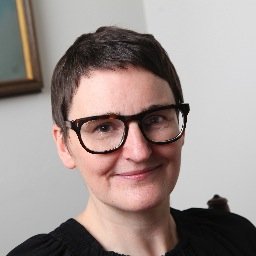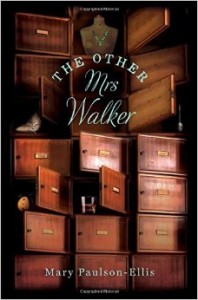Whose Point of View is it Anyway?
 When I started writing my debut novel, The Other Mrs Walker (Mantle, 2016) I kept getting transported back to 1944. Not literally, of course (though that would have helped with research) but through the eyes of one of my characters.Then another.
When I started writing my debut novel, The Other Mrs Walker (Mantle, 2016) I kept getting transported back to 1944. Not literally, of course (though that would have helped with research) but through the eyes of one of my characters.Then another.
Then another after that.
Sometimes this would happen within the same page. Sometimes within the same paragraph. What was going on?
Point of View (POV) is all about knowing where to look: not so much at the trees, or the ground, or the cloud on the horizon, but as Percy Lubbock put it in his 1921 tome, The Craft of Fiction the relation in which the narrator stands to the story. Is she outside looking in? Or omniscient – the all seeing, all knowing goddess? Or is she one of the story’s own characters, fully attuned to her own internal wrangling but in the dark as to the motives of the rest?
I realised as I was bumping around in 1944 that I was trying to be inside the heads of three of my characters at once, each with a unique POV, each trying to tell me their version of the same story. Just to complicate things further, I also had another character in 2011 seeing the same tale but from a completely different angle.
Desperate to bring some order to chaos I thought back to anything I could remember about POV. It came down to this:-
Rule No. 1: Decide on one POV and stick to it.
Rule No. 2: If you must have more than one POV, don’t shift it around within chapters… and certainly not within pages, paragraphs or sentences.
Lubbock was very strict on Rule No. 1. He suggested that War and Peace would have been even greater if Tolstoy’s viewpoint had been consistent. But I’ve always been inclined to play with POV. The first novel I ever wrote tried to tell the story of a disappearance through the eyes of four women. It won a prize from an agent and I thought, this is it, my big ticket to the golden land called, Publication.
Sadly it was not to be. However, the agent did give me some advice. A) leave this book aside and write another one. B) write that story with linear chronology, from one POV only.
Although it took me a while, I eventually accepted the veracity of the first piece of advice and gave up that novel to write another. It became, The Other Mrs Walker.
But the second? I returned in my time machine to 1944 and interrogated my multi-POV instincts. Which character interested me the most? And if it was all three, what was it about each of their versions that really mattered? Could I merge them into a single narrative and still tell the same tale? And whose story was it anyway?
Marlon James spent years trying to work out whose POV should be dominant in his 2015 Man Booker prize-winning novel, A Brief History of Seven Killings. Each time he started out he found he couldn’t quite say everything he wanted to say, so he began again from a different POV. It took a friend to point out that he had the whole story already, just in several different versions. James put them all together and the rest is history.
(Therein lies a truism for writers. If you can’t see the wood from the trees, solicit another POV on your work-in-progress. You may be surprised at what arises.)
 Back in 1944 I too discovered that however hard I tried, the story at the heart of my novel would never conform to the Lubbockian dictat of one POV only. Nor was it chronologically linear. But my experiments with POV had unwittingly led me to the answer I needed. My story belonged not to one voice, with one POV, but to a family – three sisters and their offspring – each of whose point of view mattered.
Back in 1944 I too discovered that however hard I tried, the story at the heart of my novel would never conform to the Lubbockian dictat of one POV only. Nor was it chronologically linear. But my experiments with POV had unwittingly led me to the answer I needed. My story belonged not to one voice, with one POV, but to a family – three sisters and their offspring – each of whose point of view mattered.
And yet… Rule No.2 still stood i.e. that shifting around of POV within chapters and paragraphs. What David Lodge calls, ‘…one of the commonest signs of a lazy or inexperienced writer.’
Lazy? No way. But inexperienced? Certainly.
For E.M. Forster, solving the POV puzzle all comes down to the power of the writer. ‘Logically, Bleak House is all to pieces,’ he wrote of Dickens’ great novel that begins with an omniscient narrator, then shifts chapter by chapter from partial omniscience directly into the mind of one of the characters. ‘…But Dickens bounces us so that we do not mind the shiftings of the viewpoint.’
For me, in 1944 once again, my concession to inexperience was to stop trying to shoehorn three POV’s into one section and give each sister the dedicated space she needed to tell her unique version of the story. The result was unexpected: a detective novel without a conventional detective, in which one narrative from 2011 gives way over and over to multiple POV’s from the past that explain the history of a dysfunctional family.
And in accepting these multi-POV instincts, I unwittingly gifted another to the only person who matters. The reader. For in the end it is she who is omniscient, with the power to put together the different pieces of the puzzle.
© Mary Paulson-Ellis, 2016
—
Category: Contemporary Women Writers, How To and Tips
























That’s why we remember the name Lubbock and not Tolstoy.
Oh wait. No, we don’t. Many of my favorite books switch viewpoints, sometimes randomly. Gone with the Wind. The Picture of Dorian Gray. I’ve only ever tried to read one Stephen King book, The Shining, and it often head-hopped from one paragraph to the next. That poor Stephen King. When will he learn? He could be more successful!
I think there’s too many non-writers or bad writers giving advice to writers. While head-hopping drives me personally mad, and I strive not to do it, if someone else feels the need and the story is still compelling, what’s the problem? If you want 20 points of view, and it works for your book, then go for it.
Great post! I think it’s one of those – many – aspects of writing, where it’s a rule you shouldn’t break… unless you really should. I’ve read one book where the POV jumped from character to character almost like the camera would in a series or film, and it drove me nuts – but if it’s done well, then it’s done well!
You didn’t clarify how you handled the changes for the multiple POV’s, which is important.
For example, I just read a book where the POV narrator has multiple shifts from Omniscient Narrator to third person close personal (deep Point of View), with two narrators. In some sections of the book, one deep POV is maintained for a page or two. For the most part, though, the changes are frequent. Most changes are by paragraph, so no section break cues to know the POV may have changed. In a few cases, the author left no cues as to narrator identity, yet it appeared to be deep POV in style. It really messes with understanding the characters’ emotions during heated interactions if the reader has no idea whose head they’re in. The POV changes within a paragraph in some cases. It’s worse than whiplash, and from an author I admire with a professional editor I admire!
Experts say only an experienced and skilled author should attempt to mix ON and/or 3rd limited and/or first person. I’m trying to hone my skill with 3rd person limited, deep POV, multiple narrator. I review carefully for places where I’ve slipped into ON, and reword. I change POV by scene, with a goal to changes by chapter. I try to keep as many back-to-back scenes with the same narrator. I try to minimize narrators. I think that’s what you were saying in the end, but it’s not clear to me.
Hi Suzan,
Thanks so much for reading my post about POV and for your comments. They are really interesting.
Yes, you are right. What I was trying to say (and sorry if it wasn’t clear) was that I ‘managed’ my multi-POV instincts not by minimizing the number of narrators, but by changing the POV from chapter to chapter rather than paragraph to paragraph. This meant that in the bit of my novel set in 1944 I went from having one section with 3 different POVs all fighting for room, to three sections each with 1 POV only.
I did this because my attempts at sliding between 3 different POVs within one section i.e switching POV from paragraph to paragraph etc, simply created confusion – in me and probably, therefore, in any potential reader I thought. It also made me question what and whose story I was really telling. By making this change I started to more fully understand the story I was trying to write.
But in general I am not a great believer in rules that must be obeyed when it comes to writing. I think it is up to each individual writer to decide what works best for them and then try to achieve it on a technical level. Sometimes we do, sometimes we don’t and sometimes we can’t – until the next time, maybe. That is where experience comes in, I hope!
I trust that is useful.
Mary
oops. Guilty. I have one short story I’m fond of where I have multiple pov’s in different paragraphs. Maybe I’ll try separate sections.
Thanks so much for addressing this issue, Mary. The book I am currently working on has more than one POV and I strongly believe it broadens the story and makes it more interesting for the reader. I agree, though, that the POV should be clear and discrete eg chapter by chapter rather than paragraph by paragraph to avoid any confusion. I support your reasoning and love your view on the reader as omniscient with the power to piece together the puzzle. Congratulations on the success of your book!